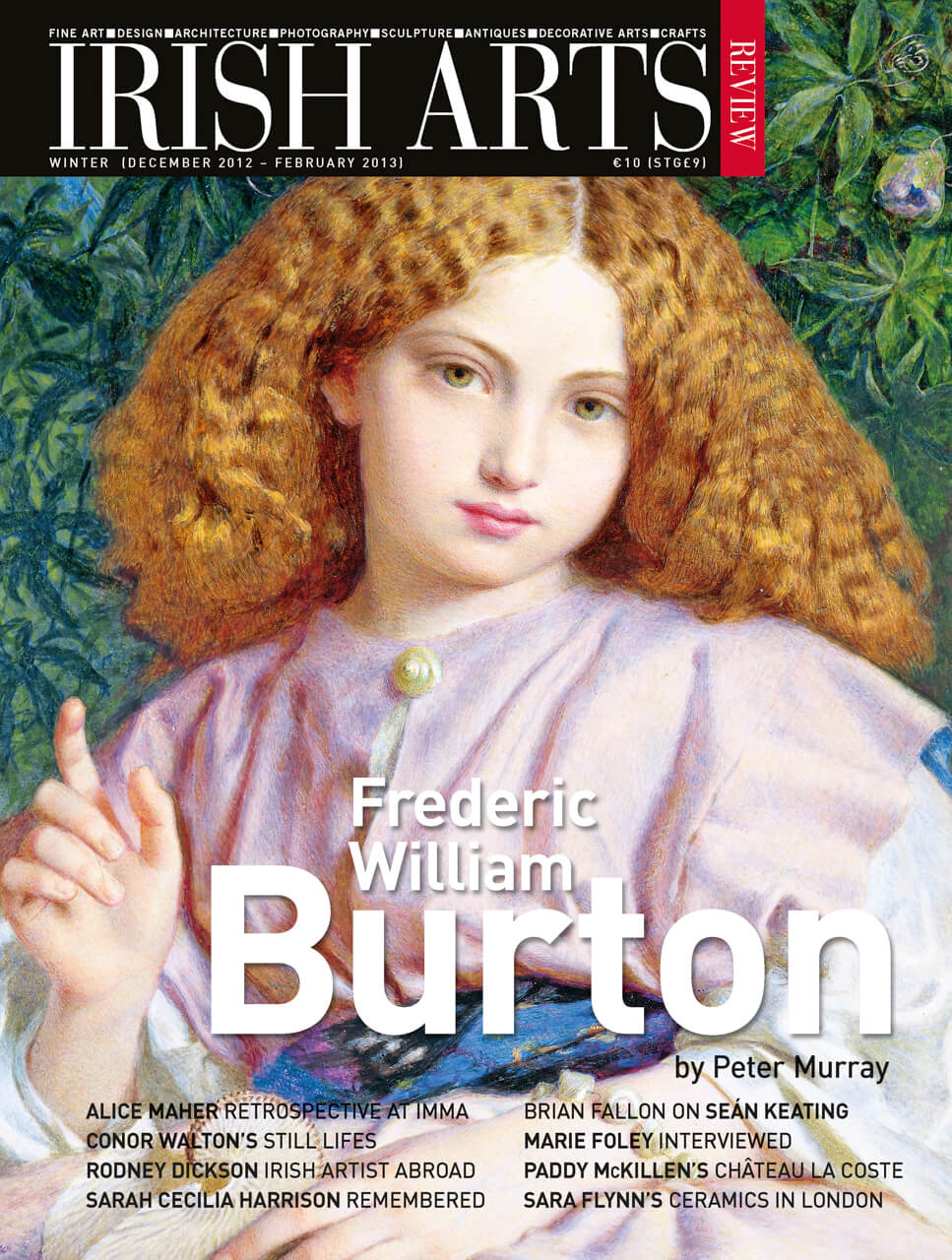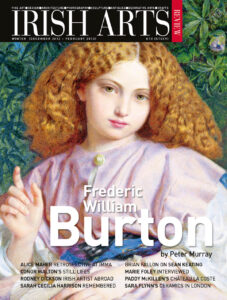

The realm of faith illustrated in the Book of Kells can be elusive to modern audiences; however, a new study by Bernard Meehan provides valuable insights into this peerless manuscript
No other medieval manuscript attracts the same level of public interest as the Book of Kells, a copy of the four Gospels produced c.800 AD. Each year, over half a million visitors view it on display in the library of Trinity College Dublin. Most are aware of its reputation for intricate artwork, vivid colouring and expert calligraphy, but for many it is enigmatic, perhaps even incomprehensible, partly because it is written in Latin and partly because its tangled decoration needs careful and experienced examination before it becomes legible. For scholars, the book is constantly open to fresh analysis and reinterpretation, with much to explore, as it is a large manuscript with 340 surviving folios (a further thirty or so are missing from the original) and lacks explicit internal evidence concerning its date or its makers. It is irregular in many respects, being the work of four or five separate scribes and perhaps an equal number of artists. Its production seems to have taken place over a lengthy period, or at least discontinuously, and was not completed. While there is general agreement in academic circles that it was made by followers of St Colum Cille (or Columba, died 597 AD) discussion continues about its origin: was it made on the island of Iona (Argyll) founded by Colum Cille himself, or at Kells in County Meath, by a community established there from Iona in the early 9th century; or was it made partly in both locations?
No other manuscript of the period contains so many richly decorated text pages. Interlinear drawings and initials number around 2,000 and are a compelling source of study. Though the ornament of the Book of Kells is dense – and even bewildering in places – its overarching themes are constant. Expressed in a variety of forms, decorative devices allude to Christ, his nature and his life, his suffering on the cross and his resurrection from the dead. Images which symbolize the Resurrection, or which depict the Eucharist as a means to eternal life, occur on almost every page. Such imagery forms almost a background rhythm to the manuscript. There are multiple images of peacocks (whose flesh was thought to be incorruptible); lions (which were believed to breathe life into their young); snakes (which sloughed off their old skin); and of chalices, communion hosts, vines and grapes. These animals, and others, came to represent Christ himself.
It is in such attention to details that we can approach an understanding of the intentions behind the art of this most complex product of the Irish middle ages.
Major pages like the image of the Virgin and Child on folio 7v repay close examination (Fig 3). The Virgin, enthroned with the Christ Child on her knee, is surrounded by angels, probably to be understood as the principal archangels Michael, Gabriel, Raphael, and Uriel. Three of them hold flabella (liturgical fans, used in the Mediterranean world for the protection of the Eucharist), and the angel in the lower right corner has a flowering rod, perhaps representing a liturgical sprinkler(1). The base of the throne is decorated with crosses, while a lion’s head on the back of the throne symbolizes Christ. The Virgin’s brooch is in the shape of a lozenge, with another four lozenges inside it. The lozenge, among the most common elements of abstract decoration in the Book of Kells, represented Christ as the logos or Word of God from early Christian times. With its four corners, it also represented an early medieval understanding of the cosmos. The Virgin’s mantle is purple, the colour of majesty from Classical times. Triple dots on the mantle, indicative of the Trinity, follow a tradition from the far east in which the motif was used for the finest garments(2). The dots, being white, may represent breast milk, which in exegesis stood for the milk of Christian instruction(3). The Child places his left hand on his mother’s breast, and his right hand on her right hand. Devotion to Mary was strong in Columban foundations: ‘She is the most high, she the holy / venerable Virgin’, in the words of a hymn composed c.700(4). The image, which may have become known in the insular world through icons, is paralleled on the shaft of the St Orans cross on Iona, and on the late 7th-century coffin of St Cuthbert at Durham Cathedral. Six profile heads looking right in the right border of the page indicate that it should be understood in conjunction with the facing folio 8r, the beginning of the Breves Causae (lists of chapter contents) of Matthew’s Gospel page 49 in this volume.
This page of display script contains a complex amalgam of script and decoration glorifying the birth of Christ. It reads: NATIUITAS / CHRISTI IN BETHLEM IU/DEAE MAGI / MUNERA OFFERUNT ET / INFANTES INTER/FICIUNTUR REGRESSIO (‘The birth of Christ in Bethlehem of Judea. The wise men offer gifts and the children are killed. Return’) [of Jesus from Egypt to Nazareth]. A profile head and arm at the top invite our gaze around the border to the feet and legs. Two seated figures engage our attention: the smaller seated figure (lower right), who wears an upper garment decorated with alternating red and green lozenges, seems to be praying; the larger figure (centre left) holds out a book or writing tablet. Above him are two peacocks, one of them standing on the head of a snake. That the peacocks are upside down may indicate the intention that some of the decoration could be viewed from the other side of an altar. Chalices from which vines sprout vigorously can be seen in the band of decoration second from the foot of the page. In a clear allusion to the text, representations of the star of Bethlehem, which guided the Magi to Jesus’ birth place (Matthew 2.1-10), define the shape of the initial letter of NATIUITAS. Matching the star held aloft on the flabellum of the angel to the lower left of the Virgin on 7v (Fig 3), they have a strong resemblance to the star as it is represented on the front panel of the 8th-century Anglo-Saxon Franks Casket in the British Museum.
Numerous decorative details such as this refer to the narrative, rather than the message, of the Gospel texts. Previously cited examples of illustrative details in the Book of Kells are on folio 253v, where the initial N of the phrase Nemo seruus potest duobus dominis seruire (Luke 16.13; ‘no servant can serve two masters’) shows two men pulling each other’s beards, with a small human figure in an initial A four lines down the page, the depiction being both of the man with two masters and of conflict; and on folio 67r, where the parable of the seed and sower (Matthew 13.17-22) is prefaced by a rooster with two hens, who may have been placed there to suggest the presence of seed. To these somewhat oblique examples can be added clear narrative episodes which are not uncommon in the art of the period, including Jesus entering Jerusalem on an ass, represented both in Matthew’s (folio 89r) and in Luke’s Gospel (folio 255v); and Jesus’ betrayal by Judas in Matthew’s Gospel (folio 116v)(5). Luke’s account of Christ’s agony in the Garden of Gethsemane also contains a small, previously unobserved and perhaps unparalleled element of illustration. On folio 277r, at the end of line 9, a lion, symbolizing Christ, looks back along the line. Above him, and to his left, Christ’s Agony is described: ‘And his sweat became as drops of blood, trickling down upon the ground’ (Luke 22.44; et factus est sudor eius sicut guttae sanguinis decurrentis in terram). The lion is placed immediately below the words guttae sangui/nis (‘drops of blood’). Red dotting around the lion is extended horizontally in two lines to the right, while above these lines further, irregular dots are connected by diagonal lines to the horizontals. In this way, the reader is invited to contemplate Christ’s blood trickling to the ground(6). It is in such attention to details that we can approach an understanding of the intentions behind the art of this most complex product of the Irish middle ages.
All images courtesy The Board of Trinity College Dublin.
The Book of Kells by Bernard Meehan, Thames &Hudson (2012) ISBN 978 0 500 238943 €75.00/ £60.00
Bernard Meehan is Head of Research Collections and Keeper of Manuscripts at Trinity College Dublin.
1 Carol A Farr, ‘Bis per chorum hinc et inde: The ‚ÄúVirgin and Child with Angels‚Äù in the Book of Kells’, Text, Image, Interpretation: Studies in Anglo-Saxon Literature and its Insular Context in Honour of √âamonn √ì Carragáin (Turnhout 2007) ed Alastair Minnis and Jane Roberts pp 117-134, at pp 122-5.
2 See J Folda, ‘Crusader Artistic Interactions with the Mongols in the Thirteenth Century: Figural Imagery, Weapons, and the √áintamani Design’, in Interactions: Artistic Interchange between the Eastern and Western Worlds in the Medieval Period, ed C Hourihane (University Park, Pennsylvania 2007) pp 344-398
3 Heather Pulliam, ‘Looking to Byzantium: Light, Color, and Cloth in the Book of Kells’ Virgin and Child Page’, Insular and Anglo-Saxon Thought in the Early Medieval Period, ed. C. Hourihane (University Park, Pennsylvania, 2011) pp 59-78, at pp 66-67
4 Thomas Owen Clancy and Gilbert Márkus, Iona. The Earliest Poetry of a Celtic Monastery (Edinburgh 1995) p 183.
5 Bernard Meehan, ”New‚Äù Narrative scenes in the Book of Kells’, in Making Histories: Proceedings of the Sixth Insular Art Conference, York 2011,
ed Jane Hawkes (Shaun Tyas, Donington,
forthcoming 2013)
6 For details of the three episodes, see Bernard Meehan, The Book of Kells (London 2012)
pp 165-171
From the IAR Archive
First published in the Irish Arts Review Vol 29, No 4, 2012



